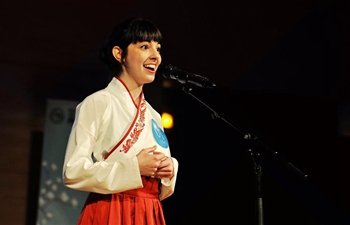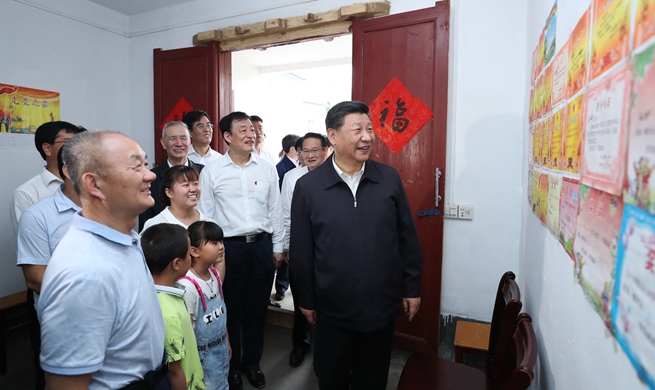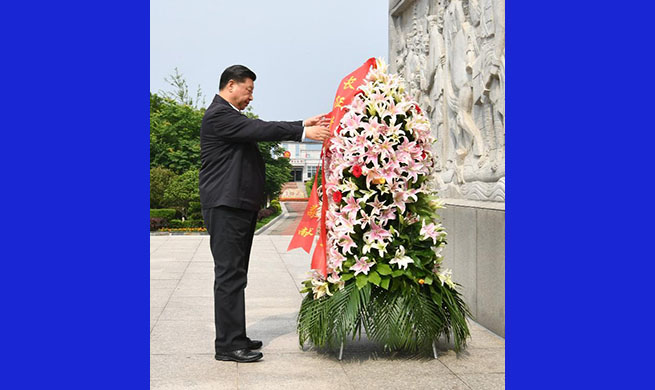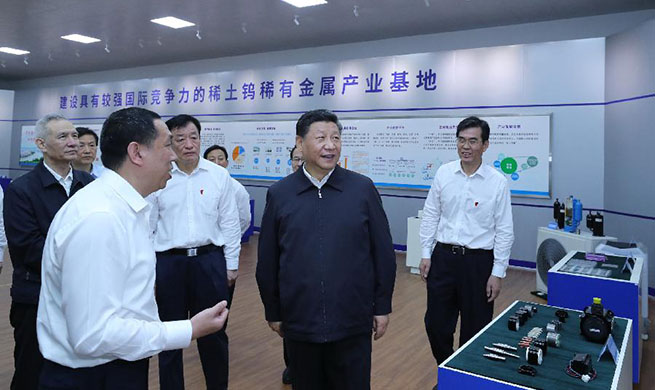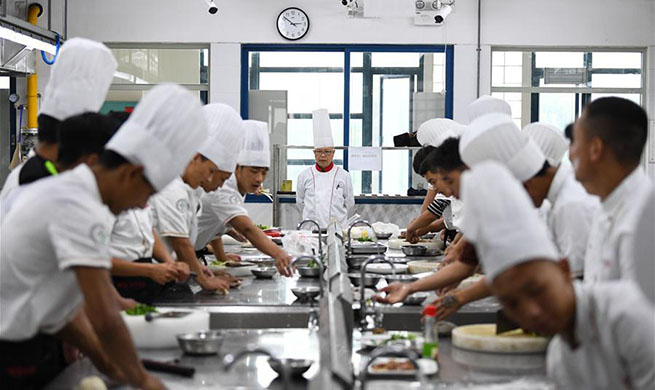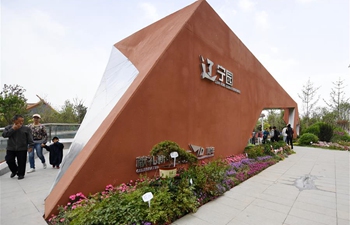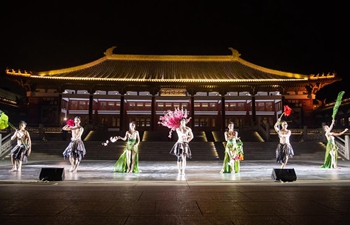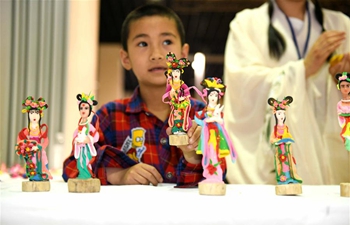KUNMING, May 21 (Xinhua) -- Beside the Jinsha River in southwest China's Yunnan Province, Zhu Liwei's sugarhouse is filled with the sweet smell of brown sugar, and workers are busy packing boxes of brown sugar that will be sold in other parts of the country.
Several years ago, when witnessing the decline of the brown sugar industry in his hometown, Zhu, a young pioneering entrepreneur in Qiaojia County, decided to set up his own sugarhouse.
He then hired professionals to guide him on how to use ancient techniques to decoct Qiaojia brown sugar, which stands out in the market for its shape, color and taste.
Qiaojia brown sugar, which is shaped like a bowl, is made from selected sugarcane through a traditional process used since the Qing Dynasty (1644-1911), boasting a high reputation in the domestic market.
Good sugar comes from good sugarcane. Located in the Jinsha River valley area of northeast Yunnan Province, Qiaojia County has abundant light, heat and water as well as fine sandy soil that is very suitable for the growth and sugar accumulation of sugarcane.
The factors of processing the sugar are very specific, from cutting sugarcane, juicing and decoction to being molded in bowls.
In addition, foaming, removing impurities and scooping sugar as well as controlling the temperature and amount of sugar are all aspects that are key to the meticulous work of old craftsmen.
As a result, the sugar, which melts in your mouth and has a rich mellow taste, boasts a translucent reddish-yellow color complimented by a strong, lingering fragrance.
The unrefined brown sugar retains much of the nutrition of sugarcane and is rich in a variety of trace elements beneficial to the human body, which can quickly supplement physical strength and increase vitality. Therefore, Qiaojia brown sugar is known as "oriental chocolate."
In 2017, the production skill of Qiaojia brown sugar was put on the list of provincial intangible cultural heritage.
"The decoction of the sugar is our unique skill, and it is very important to control the heat," said Wan Xingquan, 70, an inheritor of the intangible cultural heritage. "When the heat gets too high, it will taste bitter; however, when the heat is too low, it won't be molded."
According to Wan, who has been decocting sugar for more than 40 years, the decoction is comparable to being a good person -- only hard work can bring sweetness to their lives.
With sought after aesthetic and quality, the unit price of the handmade brown sugar is more than two times that of ordinary brown sugar.
Last year, the planting area of sugarcane in Qiaojia County reached more than 333 hectares, and the output of brown sugar exceeded 3,500 tons with a value of almost 100 million yuan (14.47 million U.S. dollars).
Now, Qiaojia brown sugar has directly or indirectly created jobs for more than 100,000 people and is an important industry for the locals to shake off poverty.
On May 17, a brown sugar industry poverty alleviation association was established in the county, and the local people signed a self-discipline and integrity convention deciding to better carry forward the 300-year-old techniques and culture of the brown sugar.
Yang Yongling, the deputy county chief of Qiaojia, said that they will provide more policy support, focus on improving product quality and create a good environment for the sustainable and healthy development of the brown sugar industry.







